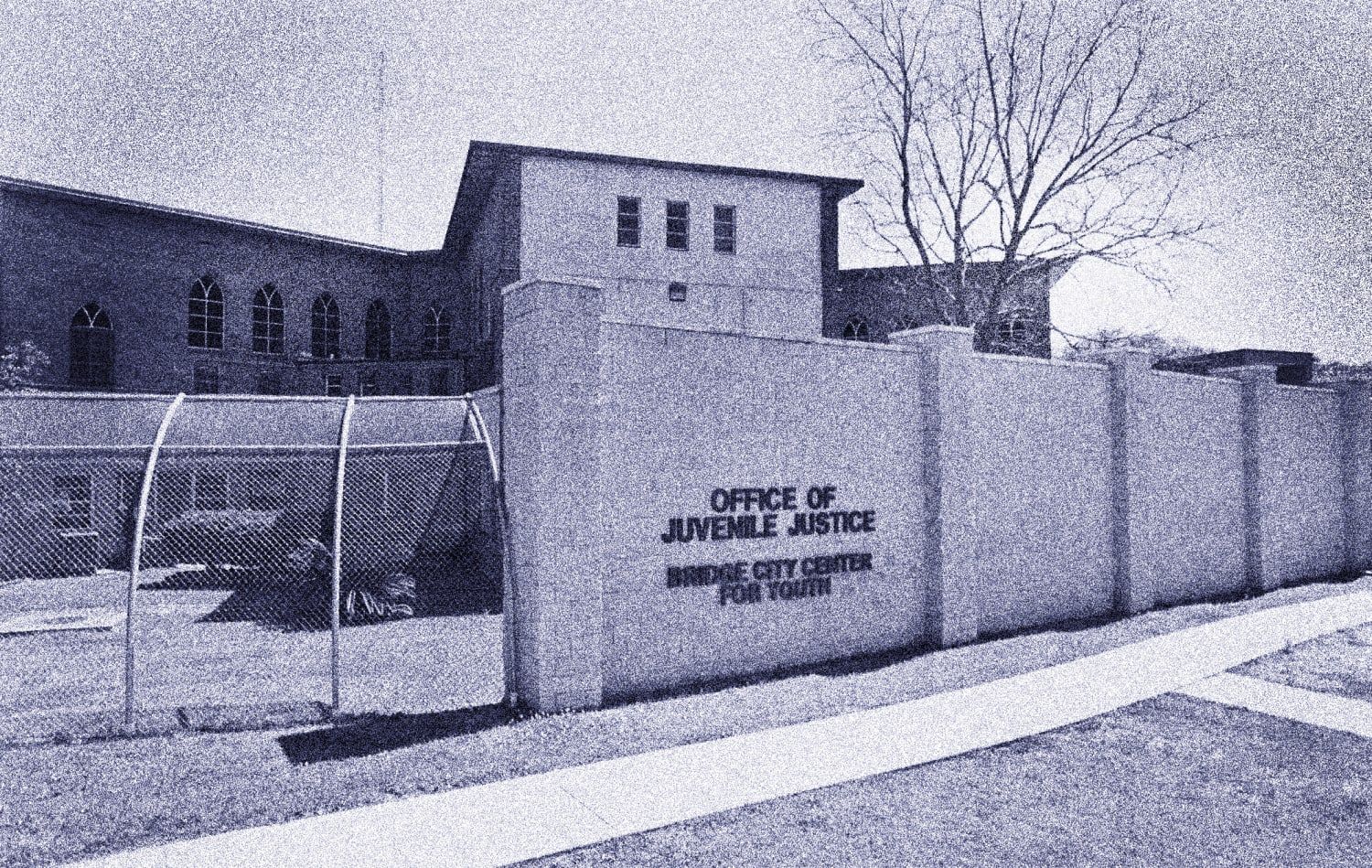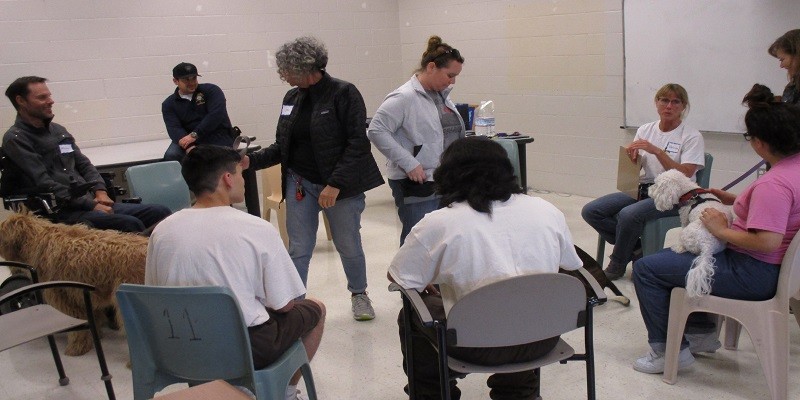Last Updated on January 15, 2025
Both parents and the court system have the authority to send a child to juvenile detention for rehabilitation purposes. However, it is crucial to involve legal authorities and professionals to determine if this option is necessary for your child’s well-being.
The decision to send a child to juvenile detention should not be taken lightly, as it involves legal and ethical considerations. Juvenile detention is proposed as a way to rehabilitate and redirect troubled youth towards a healthier path. It is a facility specifically designed for minors who exhibit delinquent behavior and are in need of guidance and support.
This article explores the factors influencing the decision to send a child to juvenile detention, the process involved, and alternative options for rehabilitation. Understanding the implications and procedures can help parents make informed decisions regarding their child’s future.
Understanding The Process Of Sending A Child To Juvenile Detention
Sending a child to juvenile detention is a decision no parent ever wants to make. However, in certain circumstances, it may become necessary to ensure the safety and well-being of the child, as well as the community. Understanding the process of sending a child to juvenile detention is essential to make an informed decision. This article will explore what juvenile detention entails, when it is appropriate to send a child to juvenile detention, and factors to consider before taking such a step.
What Is Juvenile Detention?
Before delving into the process of sending a child to juvenile detention, it is important to have a clear understanding of what juvenile detention actually means. Juvenile detention is a secure facility specifically designed to house individuals under the age of 18 who have committed a criminal offense. Unlike adult prisons, juvenile detention centers focus on rehabilitation rather than punishment.
When Is It Appropriate To Send A Child To Juvenile Detention?
Deciding when to send a child to juvenile detention is a sensitive issue that requires careful consideration. In general, the decision is made when a child poses a significant threat to themselves, others, or the community. Some common scenarios that may warrant sending a child to juvenile detention include:
- Repeated serious offenses: If a child consistently engages in serious criminal behavior despite attempts at intervention, juvenile detention may be necessary to protect them and others.
- Violent or dangerous behavior: When a child exhibits violent or dangerous tendencies, such as assaulting others or using weapons, placing them in a secure facility can be essential for their own rehabilitation and the safety of others.
- Escalating criminal activities: If a child’s criminal activities escalate over time, progressing from minor offenses to more serious crimes, it may be necessary to remove them from the community temporarily to prevent further harm.
Factors To Consider Before Sending A Child To Juvenile Detention
While the decision to send a child to juvenile detention can be emotionally challenging, there are several factors that should be carefully evaluated beforehand. These factors include:
- Alternative interventions: Before resorting to juvenile detention, explore alternative interventions such as counseling, therapy, or community programs that could address the underlying issues contributing to the child’s behavior.
- Individual circumstances: Consider the unique circumstances of the child, including their age, maturity level, mental health, and any extenuating factors that may have influenced their actions.
- Long-term impact: Reflect on the potential long-term consequences of sending a child to juvenile detention, weighing the benefits of rehabilitation against the potential negative impact on their future prospects.
- Potential for reform: Assess the child’s capacity for change and growth. Explore whether the intervention provided by a juvenile detention center has the potential to positively impact their behavior and redirect them onto a more constructive path.
Making the decision to send a child to juvenile detention is never easy. It requires careful consideration of the circumstances, weighing the safety of the child and the community against the potential benefits of rehabilitation. By understanding the process and considering the relevant factors, parents can make the best decision for their child’s well-being and future.

Credit: www.nbcnews.com
Alternatives To Juvenile Detention For Troubled Children
In certain situations, parents may wonder if they can send their troubled child to juvenile detention. However, it’s important to remember that there are alternative options available that prioritize rehabilitation and support over punishment. In this blog post, we will explore community-based programs, counseling and therapy options, and rehabilitation programs as alternatives to juvenile detention for troubled children.
Exploring Community-based Programs For Troubled Children
Community-based programs provide troubled children with a structured environment where they can receive guidance, support, and education. These programs often strive to rehabilitate children and help them reintegrate into society successfully. Some examples of community-based programs include:
- Residential group homes
- Mentoring programs
- After-school programs
- Youth clubs and organizations
These programs aim to address the underlying issues that contribute to a child’s troubling behavior while providing them with positive role models and opportunities for personal growth. By involving the community, children can develop important life skills and relationships that can help steer them away from delinquency.
Counseling And Therapy Options For Troubled Children
Counseling and therapy can be valuable resources for troubled children, as they provide a safe and confidential space for them to express their thoughts and emotions. By working with a trained therapist or counselor, children can explore the root causes of their behavior and develop healthier coping mechanisms. Here are some counseling and therapy options that can serve as alternatives to juvenile detention:
- Individual therapy
- Family therapy
- Group therapy sessions
- Trauma-focused therapy
These interventions focus on addressing the emotional and psychological needs of troubled children. By providing them with the necessary tools to navigate their challenges, counseling and therapy help children develop self-awareness, resilience, and healthier ways of relating to others.
Rehabilitation Programs As An Alternative To Juvenile Detention
Rehabilitation programs prioritize the idea that troubled children can change and grow with the right guidance and support. Instead of focusing solely on punishment, these programs aim to address the underlying issues that contribute to a child’s delinquency. Some rehabilitative options as alternatives to juvenile detention include:
- Substance abuse treatment programs
- Anger management classes
- Life skills training
- Employment and vocational training programs
These programs provide troubled children with the tools they need to overcome challenges, develop essential life skills, and reintegrate into society positively. By focusing on rehabilitation rather than punishment, these alternatives aim to break the cycle of delinquency and provide a brighter future for troubled children.
Consequences And Considerations Of Sending A Child To Juvenile Detention
The decision to send a child to juvenile detention is a difficult one with far-reaching consequences. While it may seem like a quick fix or a way to discipline a troubled child, it is important to consider the short-term and long-term effects on the child, the impact on family relationships and dynamics, and the need for ongoing support and rehabilitation post-detention.
Short-term And Long-term Effects On The Child
When a child is sent to juvenile detention, they may experience a range of short-term and long-term effects. Short-term effects may include:
- Emotional distress and trauma
- Loss of trust in adults and authority figures
- Disruption of education and academic development
- Stigmatization and labeling
These short-term effects can have long-term consequences on the child’s behavior and well-being. Some potential long-term effects may include:
- Increased likelihood of reoffending
- Difficulty reintegrating into society and maintaining employment
- Mental health issues and substance abuse problems
- Limited educational and career opportunities
Impact On Family Relationships And Dynamics
Sending a child to juvenile detention not only affects the child but also has a significant impact on family relationships and dynamics. Families may experience:
- Feelings of guilt, shame, and failure
- Strained relationships with the child and between siblings
- Financial burden due to legal fees and counseling costs
- Increased stress and tension within the family
It is crucial for families to seek support and counseling during this challenging time to rebuild relationships and navigate the changes that occur as a result of juvenile detention.
The Need For Ongoing Support And Rehabilitation After Juvenile Detention
While juvenile detention may serve as a consequence for a child’s actions, it is not enough to address the underlying issues that contributed to their behavior. Ongoing support and rehabilitation are essential for the child’s successful reintegration into society. This can include:
- Counseling and therapy to address trauma and mental health issues
- Educational and vocational training to build skills and improve opportunities
- Alternative programs and interventions focused on rehabilitation
- Mentorship and positive role models to encourage positive behavior
By providing the necessary support and rehabilitation, we can work towards breaking the cycle of juvenile delinquency and helping these children become productive members of society.
Frequently Asked Questions For Can I Send My Child To Juvenile Detention?
Can A Parent Send Their Child To Juvenile Detention Voluntarily?
No, a parent cannot voluntarily send their child to juvenile detention. Juvenile detention is typically a result of delinquency or criminal behavior and is determined by the court system.
What Factors Can Lead To A Child Being Sent To Juvenile Detention?
A child may be sent to juvenile detention if they have committed a crime or engaged in delinquent behavior. Factors such as the severity of the offense and the child’s prior record can influence this decision.
Is Juvenile Detention The Only Option For Troubled Children?
No, juvenile detention is not the only option for troubled children. There are alternative programs and rehabilitation efforts available to help address the underlying issues and provide support and guidance for the child.
Can A Child Be Held In Juvenile Detention Indefinitely?
No, a child cannot be held in juvenile detention indefinitely. The length of time a child spends in juvenile detention is usually determined by the court and is dependent on the nature of the offense, the child’s age, and other relevant factors.
What Happens To A Child After They Are Released From Juvenile Detention?
After being released from juvenile detention, a child may be placed on probation or parole and required to follow certain conditions. They may also be provided with support services to help reintegrate into society and prevent future delinquent behavior.
Can A Child’s Record Be Cleared After Juvenile Detention?
In some cases, a child’s record can be expunged or sealed after juvenile detention, depending on the laws and regulations of the jurisdiction. This allows the child to move forward with a clean slate and better opportunities for the future.
Conclusion
The decision to send a child to juvenile detention is a complex one that should be approached with careful consideration. It is important to prioritize the well-being and rehabilitation of the child, seeking alternative solutions whenever possible. Taking into account their individual circumstances and the available options, it is crucial to pursue a course of action that offers the best chance for growth and positive change.

